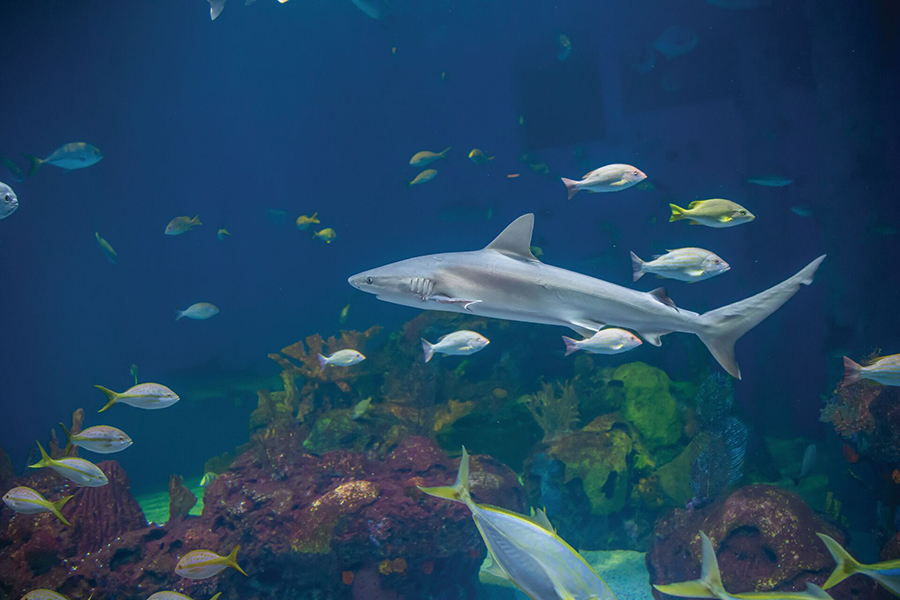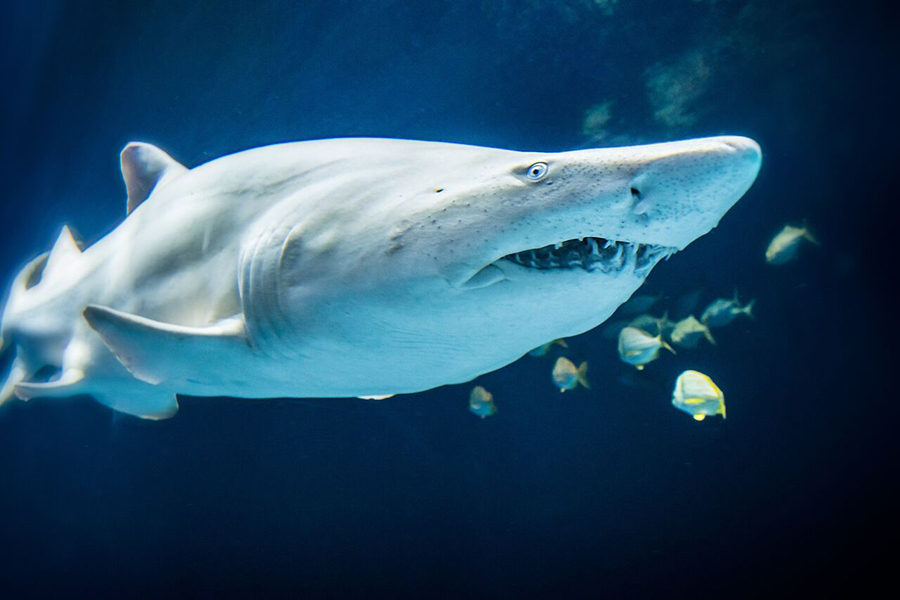Sandbar Shark

- Common Name: Sandbar Shark
- Scientific Name: Carcharhinus plumbeus
- Diet: Bony fishes, smaller sharks, rays, octopuses, mollusks, crabs, and shrimp
- Range: Tropical Atlantic, Pacific, and Indian Ocean
- Size: 6 to 8 feet and 100 to 200 pounds
- Lifespan: 20 years or more
IUCN Red List Status: Endangered
Endangered
Overview
The sandbar shark is a large coastal shark known for its tall, triangular dorsal fin and robust body. It is one of the most common shark species found in shallow coastal waters and plays a key role in maintaining the balance of marine ecosystems. Despite its intimidating appearance, it is generally not considered dangerous to humans.
Geographical Distribution and Habitat
The sandbar shark has a global distribution inhabiting temperate and tropical waters. Sandbar sharks inhabit shallow coastal waters commonly found in estuaries, bays, and harbors. As their name implies, this species is frequently found in areas with sandy soft bottoms. This species tends to avoid coral reefs and rough or rocky bottoms. Sandbar sharks are predominantly bottom dwelling species and are seldom seen at the surface of the ocean. This shark is commonly found at a depth of 60-200 feet, but occasionally up to 800 feet.. This is believed to be during periods of seasonal migration, when they are known to move south for the winter and north again for the summer months.

Diet
Sandbar sharks are opportunistic feeders, meaning they prey upon a wide variety of aquatic animals. These sharks hunt for food constantly but are most active at night. Due to the wide range of prey and their proficiency as hunters, they are considered to be one of the most successful hunters in the ocean. Studies have found that sandbar sharks have a relatively large liver and are found regularly with partially full stomachs indicating a higher rate of success with hunting compared to similar sharks.
Fun Facts
- Sandbar sharks are viviparous, meaning that the embryo develop inside of the female and are nourished via a placental connection. These sharks are born living and free-swimming.
- Sandbar sharks give birth to 6 to 13 pups per litter and the ratio of males to females is almost always 1:1.
ADD-ON EXPERIENCE
Out to Sea
Shark Dive
The Out to Sea Shark Dive takes you underwater inside our steel enclosure to come face-to-fin with sand tiger sharks, brown sharks, and Atlantic goliath groupers. Our state-of-the-art air helmets allow you to comfortably submerge underwater without diver certification.
Learn About Other Animals
Out to Sea
Sand Tiger Shark
- Common Name: Sand Tiger Shark
- Scientific Name: Carcharias taurus
- Diet: Bony fish, rays, crab, lobster, squid, smaller sharks
- Range: Atlantic Ocean, Indian Ocean, Pacific Ocean
- Size: 7 to 10 feet and 200 to 350 lbs
- Lifespan: 15 to 35 years


